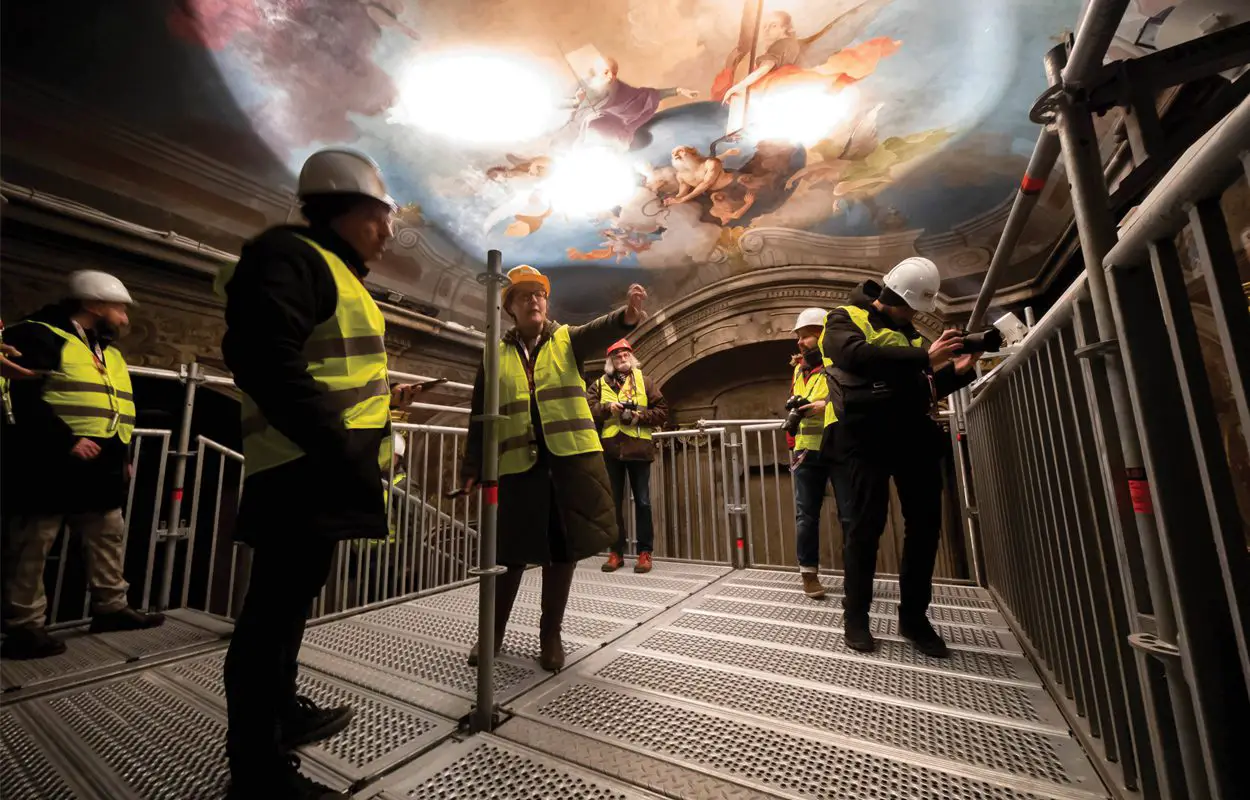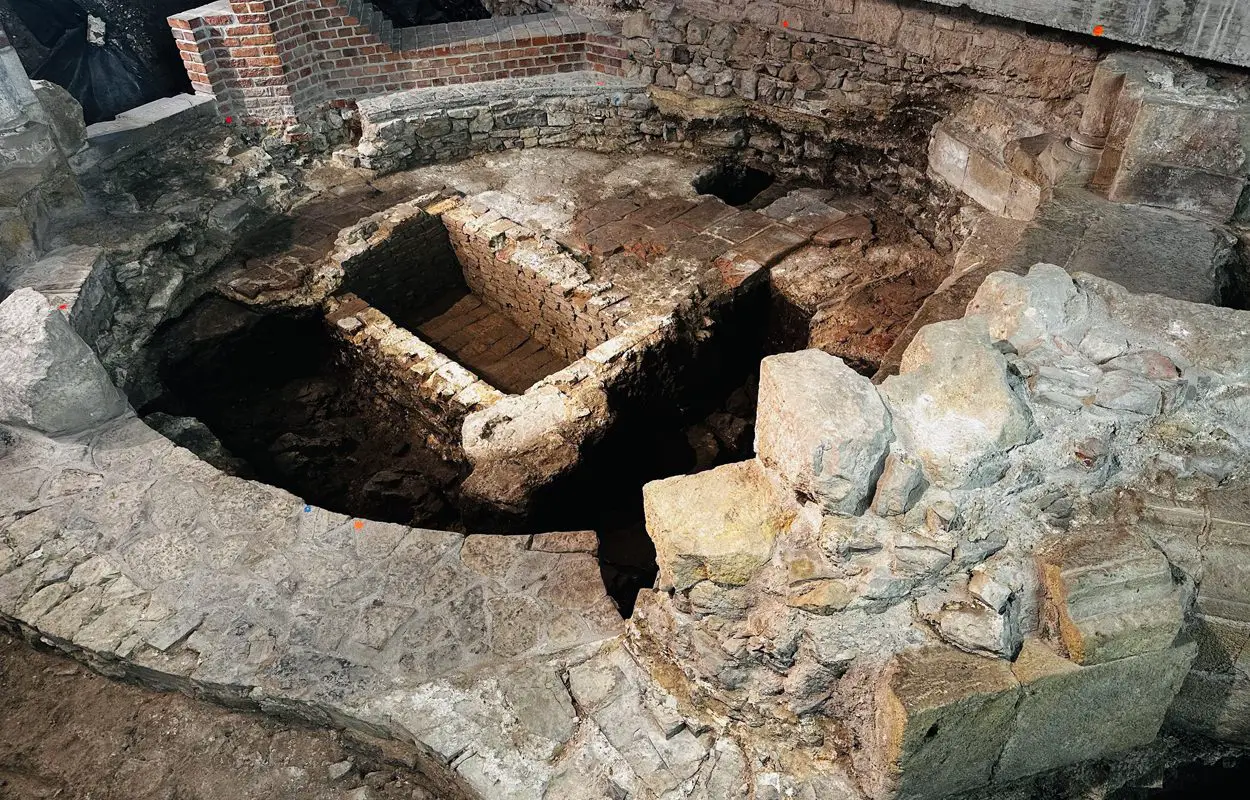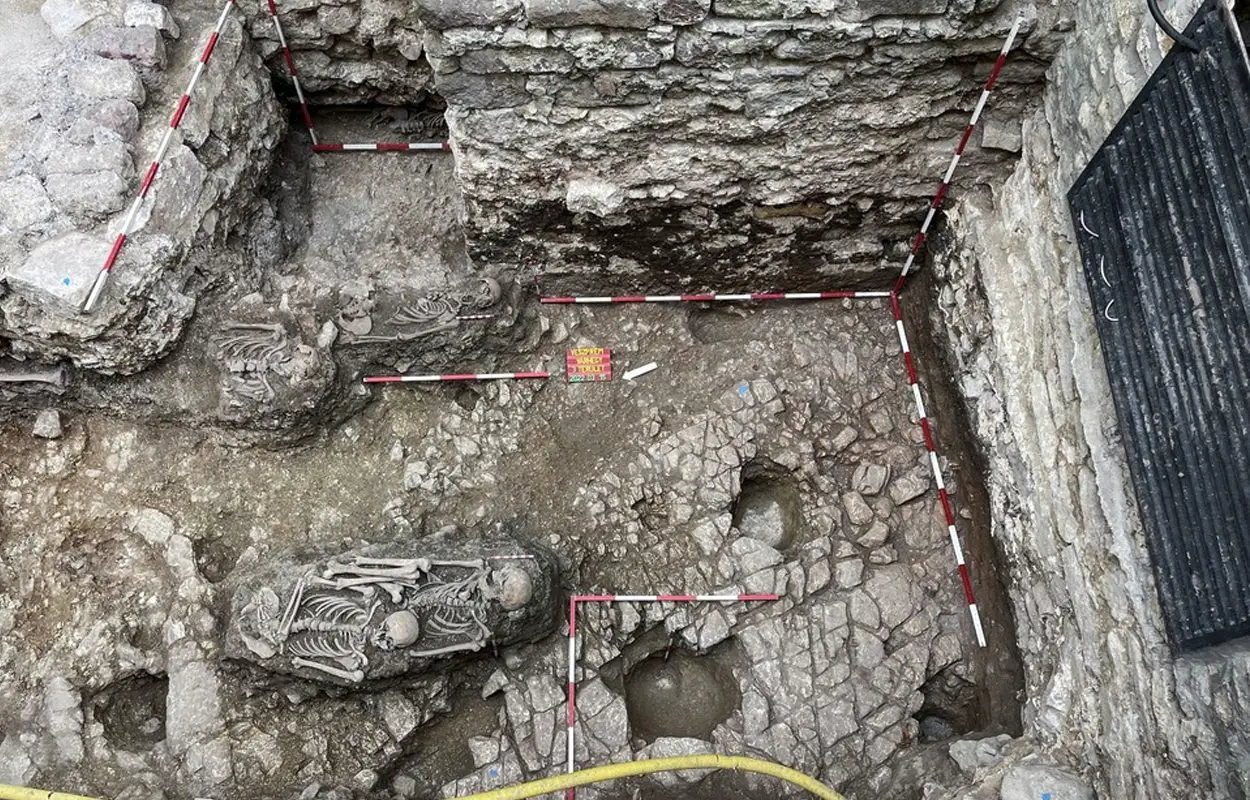Veszprém, a current European Capital of Culture has become one of the largest restoration projects in Europe, a collaboration bridging archaeology and faith during an investigatory journey to restore the historic Castle District.
The history of Veszprém is a complex weave of destruction and rebirth through the ages. According to legend, the city was founded on seven hills near lake Balaton, located in the Veszprém administrative county 115 km’s west of Budapest, Hungary.
Evidence of human occupation first dates from the 5th millennium BC during the late Neolithic, with the Castle Hill (Várhegy) becoming a fortified seat of a tribal chieftain during the Bronze Age around 2,000 BC.
Following the migration period and the Hungarian conquest of the Carpathian Basin, a castle was constructed on Castle Hill during the 10th and 11th century. This fortress was witness to several major conflicts, with the most notable being a decisive battle fought over the Christianisation of Hungary between Stephen I of Hungary and the pagan Duke of Somogy, Koppány.
The castle would change hands several times over the centuries, ultimately being slighted in 1701 by Leopold I, Holy Roman Emperor, who had the végvár defensive line of border castles destroyed as part of the 1699 Karlóca peace treaty.
What remains of the medieval castle can be viewed at the Great Bastion Memorial Park, and etched in white markings along Castle Street outlining the original castle plan. The interior of the castle would also see several phases of destruction and rebuilding, leaving today a footprint of baroque, medieval and gothic buildings, known today as the Castle District.
The largest of these buildings is the towering two-steeple St. Michael’s Cathedral, which according to the Legenda maior S. Stephani regis, a contemporary text written between 1077 and 1083, was first constructed by Queen Gisela (the wife of Stephen I of Hungary), between 1030 and 1040.
Queen Gisela played a fundamental role in spreading the Christian faith and Western culture in Hungary. She would eventually be beatified in 1975, with her sacred relics now placed in St. Michael’s Cathedral for visiting pilgrims.
Queen Gisela’s love for Veszprém also left a lasting legacy on the city. Following the establishment of the Roman Catholic Archdiocese of Veszprém, a tradition emerged entitling the bishop of Veszprém to crown the Queens of Hungary, thus Veszprém also becoming known as the “City of Queens”.
The Castle District Restoration Project
As part of an ongoing project started in 2021, the Castellum Asset Management Directorate, established as the directorate of the Archdiocese of Veszprém, has been conducting one of the largest restoration projects in Europe of the Veszprém Castle District.
The project, covering an area of 45,000 square metres, is faithfully restoring the interior and exterior of 18 listed buildings, including St Michael’s Cathedral, the Archbishop’s Palace, the Gisela Chapel, St. Stephen’s Church, and St George’s Chapel.
According to the project leaders, the restoration process has been a forensic study, meticulously piecing back the layers of history to ensure that the most appropriate and authentic fabric, colour, materials, and architectural styles are correctly applied in each building.


Dr Veronika Nagy, Museum Director, Archdiocese of Veszprém, said: “The restoration will renew and reaffirm Veszprém Castle District as one of Hungary’s most important religious and cultural heritage sites, from the time of King Stephen I and Queen Gisela, one thousand years ago, to today. We invite visitors not only to discover our history, but also the fascinating process of restoring and conserving it.”
The whole project has been one of faith, giving back the people of Veszprém their restored cultural and religious centre, but also a bridge working with archaeologists to uncover the forgotten history of the majestic Castle District.
Archaeologists conducted a survey of the Castle District to determine the exact position and level of the castle remains. By mapping the walls and archaeological features, the survey results, supplemented with written and pictorial sources, have supported the decisions made by architects in planning the reconstruction and restoration works.


This was followed by exploratory trial excavations of the buildings and their surroundings, in particular, the area around St George’s Chapel for the construction of a new protective structure. St George’s Chapel actually refers to two buildings that existed at different times. The early round chapel was probably already standing in the 10th century until a later structure with an octagonal floor plan replaced it in the 13th century.
The chapel is not only important for the religious significance as one of the earliest Christian monuments in Hungary, but also for the historical aspect of the Hungarian kingship. According to the Vita Sancti Emerici ducis, the canonised legend of Saint Emerich from around 1110, St. George’s Chapel was where Prince Emerich, son and heir of King Stephen I of Hungary, pledged his vow of chastity.
In a paper published in the Hungarian Archaeology e-journal, excavations of the chapel by the National Archaeological Institute of the Hungarian National Museum, identified a dolomite surface level revealing a humus layer containing numerous Neolithic, Copper Age, and Bronze Age finds.


According to the paper authors: “Following the removal of the modern layers, the curved contour of the early round chapel (rotunda) became visible right west of the later chapel’s walls. We have also uncovered a thick mortary layer southwest of the chapel, above the rocky ground, which was most probably placed down to level the terrain and serve as the base level for the rotunda.”
Archaeologists also found three burials associated to the chapel that precede the construction of the 11th century Cathedral. They are aligned on a southwest/northeast orientation, however, the burials were heavily disturbed when the area became a medieval cemetery associated to the Cathedral.
Work In Progress
WIP – Work In Progress, is an exhibition currently running in the Castle District that enables the public to observe the buildings and artefacts uncovered at various stages of renovation. The exhibition takes visitors through areas of construction where the works are temporarily halted or still in progress, providing a unique insight into the stages of their preservation in a unique way.
Source: www.heritagedaily.com


